Turkey’s Vatan Party has started an Initiative on the New International Order (NINTO) and organized an international symposium. 38 distinguished speakers representing 24 countries from 6 continents parcipated in the symposium, among them various experts of United World International.
Participants debated a wide range of issues from the end of the unipolar world to the crisis of neoliberalism, from identity politics to alternative concepts of security alliances and political economy.
UWI will present in the coming days the speeches held in the symposium in the hope of encouraging the debate on the emerging new world order.
Today we present the speech by Prof. Cheng Enfu, Prof. Lu Baolin and PhD Student Yu Shichao. The authors examine in depth and academical value mechanisms of current imperialism.
Their deep and detailed analysis produced a longer presentation, of which UWI today presents the first part. The second and last part will be presented to the readers in the coming days.
On the Five Characteristics of Neo-imperialism: Based on Lenin’s Theory of Imperialism
by CHENG Enfu, LU Baolin and YU Shichao
Cheng Enfu (1950-), Chief Professor of the University of the Chinese Academy Of Social Sciences, Director of the Research Center for Economic and Social Development of the Chinese Academy of Social Sciences (Beijing 100732).
Lu Baolin (1982-), Professor of the School of Economics of Qufu Normal University (Rizhao 273100, Shandong).
Yu Shichao (1990-), PhD student at the Shanghai University of Finance and Economics.
Abstract: Neo-imperialism is the specific contemporary stage of historical development that features the economic globalization and financialization of monopoly capitalism. The characteristics of neo-imperialism can be summed up on the basis of the following five key features: (1) the new monopoly of production and circulation. The internationalization of production and circulation, together with the intensified concentration of capital, gives rise to giant transnational monopoly corporations whose wealth is nearly as great as that of whole countries; (2) the new monopoly of finance capital, which plays a decisive role in global economic life and generates a malformed development, namely, economic financialization; (3) the monopoly of the US dollar and intellectual property, generating the unequal international division of labor and the polarization of the global economy and wealth distribution; (4) the new monopoly of the international oligarchic alliance. An international monopoly alliance of oligarchic capitalism, featuring “one Beherrscher [ruler] and several other great powers,” has come into being and provides the economic foundation for the money politics, vulgar culture and military threats that exploit and oppress on the basis of the monopoly; and (5) the economic essence and general trend. The globalized contradictions of capitalism and various crises of the system often undergo an intensification that creates the new monopolistic and predatory, hegemonic and fraudulent, parasitic and decaying, transitional and moribund nature of the capitalist order.
Keywords: Lenin’s Imperialism, the features of neo-imperialism, the character of neo-imperialism, financial monopoly capital, the controversy of contemporary capitalism, the principles of political economy
The historical evolution of capitalism has passed through several distinct stages. At the beginning of the 20th century capitalism reached the stage of private monopoly, which Lenin termed the imperialist stage. In the era of imperialism,the law of uneven economic and political development came into operation. In order to expand overseas and redistribute the territory of the world, the leading powers formed various alliances and launched a fierce struggle that led to two worlds wars. Eurasia suffered from continuous wars throughout the first half of the 20th century. One after the other, the national democratic revolution and the communist movement developed continuously to a higher stage. After WWII, a number of economically backward countries adopted the socialist path of development, intensifying the confrontation between capitalism and socialism. Although it had long before been predicted in the Communist Manifesto that capitalism would inevitably be replaced by socialism, this was accomplished only in a very few countries. The capitalist and imperialist system, despite suffering grave problems, still survived. From the 1980s and early 1990s, capitalism carried out a strategic shift to neoliberal policies, and evolved into its neo-imperialist stage. This represents a new stage in the development of imperialism following the Cold War.
In his book Imperialism, the Highest Stage of Capitalism, Lenin set out the definition and characteristics of imperialism as follows:
If it were necessary to give the briefest possible definition of imperialism we should have to say that imperialism is the monopoly stage of capitalism……we must give a definition of imperialism that will include the following five of its basic features: (1) the concentration of production and capital has developed to such a high stage that it has created monopolies which play a decisive role in economic life; (2) the merging of bank capital with industrial capital, and the creation, on the basis of this “finance capital”, of a financial oligarchy; (3) the export of capital as distinguished from the export of commodities acquires exceptional importance; (4) the formation of international monopolist capitalist associations which share the world among themselves, and (5) the territorial division of the whole world among the biggest capitalist powers is completed. Imperialism is capitalism at that stage of development at which the dominance of monopolies and finance capital is established; in which the export of capital has acquired pronounced importance; in which the division of the world among the international trusts has begun, in which the division of all territories of the globe among the biggest capitalist powers has been completed. [1]
In an article published in December the same year, Lenin further described three characteristics of imperialism. “Imperialism is a specific historical stage of capitalism. Its specific character is threefold: imperialism is monopoly capitalism; parasitic, or decaying capitalism; moribund capitalism.” [2]
Based on Lenin’s theory of imperialism, we shall analyze contemporary capitalism while bearing in mind the recent changes it has undergone. Neo-imperialism, we shall argue, is a specific stage of historical development that has arisen in the contemporary world against the background of economic globalization and financialization. The character and features of neo-imperialism can be summarized on the basis of five aspects.
1. The new monopoly of production and circulation
Lenin stated that the most profound economic foundation of imperialism is monopoly. This is deeply rooted in the basic law of capitalist competition which holds that competition results in the concentration of production and capital, and that this concentration will inevitably lead to monopoly when it reaches a certain level. In the early years of the 20th century, the capitalist world experienced two huge waves of corporate mergers as the concentration of capital and the concentration of production reinforced each other. Production came increasingly to be concentrated in a small number of large companies, with the process bringing about organization on the basis of industrial monopolies with cross-sector multi-product management. Instead of free competition, monopoly alliances held sway. From the early 1970s, capitalism encountered a “stagflation” crisis that lasted for nearly 10 years. Economic recession and competitive pressures in the domestic market drove monopoly capital to seek new growth opportunities overseas. With the support of a new generation of information and communications technologies, foreign direct investment and international industrial transfers have continually reached new heights, and the degree of internationalization of production and circulation has dwarfed that of the past. Monopoly capital is being redistributed globally from production to circulation. Through the decentralization and internationalization of production processes, a system has arisen in which global value chains and the operational networks for organizing and managing transnational corporations have been divided up. The transnational companies coordinate their global value chains through complex networks of supplier relationships and through various governance models. In such systems, the processes involved in the production and trading of intermediate products and services are divided up and distributed around the world. The input and output transactions are carried out in the global production and service networks of the subsidiaries, contract partners and suppliers of the transnational companies. According to statistics, about 60% of global trade consists of the exchange of intermediate products and services, and 80% of it is achieved via transnational companies.[3]
Within the new monopoly structures, the second characteristic of neo-imperialism is the internationalization of production and circulation. The further concentration of capital leads to the rise of giant monopoly transnational corporations whose wealth may be as great as that of whole countries. Transnational corporations are the true representatives of contemporary international monopolism. The characteristics of the giant monopoly transnational corporations can be summarized as follows.
1.1. The number of transnational corporations has multiplied dramatically, and the degree of socialization and internationalization of production and circulation has reached a higher level
Since the 1980s, transnational corporations have become the main driving force of international economic intercourse as the bearers of foreign direct investment. In the 1980s, foreign investment world-wide grew at an unprecedented rate, much faster than the growth during the same period of such other major economic variables as world output and trade. In the 1990s, the scale of international direct investment reached an unprecedented level. The transnational corporations established branches and affiliates around the world via foreign direct investment, the volume of which had expanded dramatically. Between 1980 and 2008, the number of global transnational companies increased from 15,000 to 82,000. The number of overseas subsidiaries grew even faster, from 35,000 to 810,000. In 2017, an average of over 60% of the assets and sales of the world’s 100 top non-financial transnational companies were located or achieved abroad. Foreign employees accounted for approximately 60% of total staff.[4] Ever since the capitalist mode of production came into being, the concentration of production activities, expanding collaboration and the evolution of the social division of labor have led to a continuous increase in the socialization of production. The decentralized labor processes are increasingly moving toward a joint labor process. The facts have proved that the sustained growth of outward foreign direct investment (OFDI) has strengthened the economic ties between all countries, and has significantly increased the level of socialization and internationalization of the production and distribution systems, in which the transnational corporations play a key role as the dominant force at the micro level. The internationalization of production and the globalization of trade have extensively redefined the way in which countries participate in the international division of labor, and this in turn has reshaped the production methods and profit models within those countries. Throughout the world, the majority of countries and regions are integrated into the network of international production and trade created by the transnational corporations. Thousands of companies around the world form value creation nodes in the system of global production chains. Within the global economy, transnational corporations have become the main channels for international investment and production, the core organizers of international economic activity, and the engine of global economic growth. The rapid development of transnational corporations shows that in the new imperialist stage constructed around the globalization of capital, the concentration of production and capital is reaching ever greater dimensions. Tens of thousands of transnational corporations now dominate everything.
1.2. The scale of accumulation by transnational monopoly capital is increasing, forming a transnational corporate empire
Although the number of transnational capitalist corporations is not especially large, they all possess great strength. They not only comprise the main force in the development and use of new technologies, but also control the marketing networks and more and more natural and financial resources. On this basis, they have monopolized the proceeds of production and circulation and equipped themselves with an unparalleled competitive advantage. Between 1980 and 2013, benefiting from the expansion of markets and the decline in production factor costs, the profits of the world’s largest 28,000 companies increased from $2 trillion to $7.2 trillion, representing an increase from 7.6% to approximately 10% of gross world product.[5] In addition, the transnational corporations not only form alliances with organs of state power, but also develop links with the global financial system, together forming financial monopoly organizations backed by state support. The globalization and financialization of monopoly capital further consolidate its wealth accumulation. In terms of sales revenue, the economic scale of some transnational corporations exceeds of that of a number of developed countries. In 2009, for example, Toyota’s annual sales exceeded the gross domestic product of Israel. In 2017 Walmart, rated by the Fortune 500 list as the world’s largest company, achieved total revenues of more than $500 billion, greater than the GDP of Belgium. If we combine the data for transnational corporations and the world’s total of almost 200 countries, and draw up a list of their annual revenues and GDPs, it emerges that the countries represent fewer than 30% of the world’s 100 largest economies, while the corporations account for more than 70%.
If world development continues along these lines, there will be more and more multinational companies whose wealth is similar to that of whole countries. Although industrial globalization has made economic activity more fragmented, vast quantities of profits still flow to a few countries of the developed capitalist world. Investment, trade, exports and technology transfer are principally managed via the giant transnational corporations or their overseas branches, and the parent companies of these transnational monopolies remain tightly concentrated in geographic terms. In 2017, corporations from the USA, Japan, Germany, France and the UK accounted for half of the top 500 companies in the world. Some two-thirds of the top 100 transnational companies are from these countries.
1.3. Transnational corporations monopolize the industries in their particular fields, controlling and running the international production networks
The transnational giants have immense quantities of capital and formidable scientific and technological strengths, which ensure them a dominant position in global production, trade, investment, and finance, as well as in the creation of intellectual property. The economies of scale that result from the monopoly positions enjoyed by the transnational corporations have expanded their competitive advantage. This is because “the larger the army of workers among whom the labor is subdivided, and the more gigantic the scale on which machinery is introduced, the more the cost of production decreases in proportion, and the more productive labor becomes.”[6] The high degree of monopoly exercised by the transnational corporations means that the concentration of production and the concentration of control over markets reinforce each other, and this accelerates capital accumulation. Meanwhile competition and credit, as two powerful levers for the concentration of capital, accelerate the trend that is seeing capital, as it accumulates, coming under increasingly narrow control. Over the past 30 years, all of the world’s nations have promoted policy options aimed at boosting investment and relaxing the restrictions to which foreign direct investment is subject. Although the increasing scale of outward foreign direct investment by the developed countries has to varying degrees accelerated capital formation and the development of human resources in underdeveloped countries, and increased their export competitiveness, it has also brought about large-scale privatization and cross-border mergers and acquisitions in these nations. This has accelerated the process through which small and medium enterprises(SMEs) are bankrupted or are forced to merge with transnational corporations. Even relatively large enterprises are vulnerable. Around the world, many industries now have an oligopolistic market structure. For example, the global market for central processing units (CPUs) has been almost completely monopolized by the firms Intel and Advanced Micro Devices (AMD). Prior to 2015, the global market for seeds and pesticides was almost entirely controlled by the six transnational companies BASF, Bayer, Dow, DuPont, Monsanto and Syngenta, that together controlled 75% of the global market for pesticides, 63% of the global market for seeds and 75% of global private research in these areas. Syngenta, BASF and Bayer alone controlled 51% of the global pesticide market, while DuPont, Monsanto, and Syngenta accounted for 55% of the market for seeds.[7] According to statistics of the European Medical Devices Industry Group, the sales in 2010 of just 25 medical devices companies accounted for more than 60% of the total sales of medical devices throughout the world. Ten transnational corporations controlled 47% of the global market for pharmaceuticals and related medical products. In China, soybeans are one of the vital food crops. All aspects of the global soybean production, supply and marketing chains are controlled by five multinational companies: Monsanto, Archer Daniels Midland, Bunge, Cargill and Louis Dreyfus. Monsanto controls the raw materials for seed production, while the other four corporations control the planting, trading and processing. These transnational corporations form various alliances through joint ventures, cooperation, or long-term contractual agreements.[8] As more and more social wealth is seized by fewer and fewer private capitalist giants, monopoly capital deepens its control and exploitation of labor. This leads to capital accumulation acquiring a world scale, aggravating global overcapacity and the polarization between rich and poor.
In the epoch of neo-imperialism, information and communications technology is developing rapidly. The emergence of the internet has greatly reduced the time and space required for social production and circulation, bringing about a surge of cross-border mergers, investment and trade. Consequently, more and more non-capitalist regions have been incorporated into the process of accumulation dominated by monopoly capital, and this has greatly strengthened and expanded the world capitalist system. The socialization and internationalization of production and circulation have undergone a great leap during the era of capitalist economic globalization in the 21st century. The pattern, described in The Communist Manifesto, according to which “a cosmopolitan character has been given to production and consumption in every country” has been greatly strengthened.[9] The globalization of monopoly capital requires world economic and political systems to be on the same track, in order to eliminate the institutional barriers between them. However, when a number of countries abandoned their earlier political and economic system and turned to capitalism, they were not rewarded with the affluence and stability preached by neoliberal economists. On the contrary, the neo-imperialist stage is the setting for the rampages of hegemonism and monopoly capital.
2. The new monopoly of finance capital
In Imperialism, the Highest Stage of Capitalism, Lenin stated: “The concentration of production; the monopolies arising therefrom; the merging or coalescence of the banks with industry—such is the history of the rise of finance capital and such is the content of that concept.”[10] Finance capital is a new type of capital formed by the merger of bank monopoly capital and industrial monopoly capital. The turning point in the change from general capitalist rule to that of finance capital appeared around the beginning of the 20th century, when banks in the leading imperialist countries were transformed from ordinary intermediaries into powerful monopolists. But before WWII, due to recurrent wars, high information transmission costs, and technical and institutional barriers such as trade protection, the linkages between global investment, trade, finance, and the market were relatively weak. The degree of globalization of the economy remained low, hindering the outward expansion of monopoly capital. After WWII, economic globalization was accelerated by the new technological revolution. In the early 1970s, rising oil prices triggered a worldwide economic crisis and brought about the grotesque phenomenon, impossible for Keynesian economics to explain, in which inflation and economic stagnation coexisted. In order to find profitable investment opportunities and escape from the “stagflation” quagmire, monopoly capital transferred traditional industries overseas, thus maintaining its original competitive advantage. Meanwhile, it accelerated its decoupling from the traditional industries, and sought to open up new financial territory. Capitalist globalization and financialization catalyzed and supported each other, accelerating the “virtualisation” of monopoly capital and the hollowing-out of the real economy. The Western economic recession of the 1970s thus acted not only as a catalyst for the internationalization of monopoly capital, but also as the starting point for the financialization of industrial capital. Since then, monopoly capital has accelerated its turn from monopoly exercised in a single country to international monopoly, from the monopoly of the industrial entity to the monopoly of the financial industry.
Within the context of the new monopoly of finance capital, the second key characteristic of neo-imperialism is that financial monopoly capital plays a decisive role in global economic life, giving rise to economic financialization.
2.1. A minority of financial institutions such as transnational banks control the main global economic arteries
To seek monopolistic power is the very nature of imperialism. “The big enterprises, and the banks in particular, not only completely absorb the small ones, but also ‘annex’ them, subordinate them, bring them into their ‘own’ group or ‘concern’ (to use the technical term) by acquiring ‘holdings’ in their capital, by purchasing or exchanging shares, by a system of credits, etc.,” Lenin explains.[11] “We see the rapid expansion of a close network of channels…transforming thousands and thousands of scattered economic enterprises into a single national capitalist, and then into a world capitalist economy.”[12] At the neo-imperialist stage, a small number of transnational corporations, most of them banks, have spread a very extensive and detailed operational network over the world via mergers, participation and shareholding, and thus control not only countless SMEs but also the main global economic arteries. An empirical study by three Swiss scholars, Stefania Vitali, James B. Glattfelder, and Stefano Battiston, showed that a relatively small number of transnational banks effectively dominate the whole global economy. Based on their analysis of 43,060 transnational corporations all over the world and the shareholding relationships between them, they found that the top 737 transnational corporations controlled 80% of total global output. After further study of the complicated network of relationships, they came up with the even more amazing discovery that a core consisting of 147 transnational corporations controlled nearly 40% of the economic value. Of the 147 corporations, some three-quarters were financial intermediaries.
2.2. Financial monopoly capital traverses the global financial market freely and quickly
When imperialism evolved into neo-imperialism, the financial oligarchies and their agents set the rules of trade and investment aside, and proceeded to launch currency wars, trade wars, resource wars, information wars, etc., plundering resources and wealth globally and at will. Within this system, neoliberal economists play the role of spokespeople for the financial oligarchs, advocating for financial liberalization and globalization in the interests of the monopolists and enticing developing countries to liberalize their capital account restrictions. If the countries concerned follow the advice these economists offer, exercising financial supervision will become more difficult for them, and their vulnerability to the hidden dangers of the financial system will increase. The effect will be to provide more opportunities for financial monopoly capital to plunder these countries’ wealth. In their operations on capital markets, the international financial investment giants tend to attack the fragile financial firewalls of developing countries, and seize opportunities to plunder the assets these countries have accumulated over decades. Financial globalization and liberalization, this indicates, have certainly established a unified and open global financial system, but in the meantime have created mechanisms through which the global “center” appropriates the resources and surplus value of the less developed “periphery”. Concentrated in the hands of a minority of the international financial oligarchies, and armed with actual monopoly power, finance capital has gained increasing volumes of monopoly profits through foreign investment, through new business ventures, and through cross-border mergers and acquisitions. As finance capital continuously levies tribute from all over the world, the rule of the financial oligarchs is consolidated.
2.3. The logic of production has given way to the logic of speculation, and the result is the distorted development represented by economic financialization
Financial monopoly capital, which has rid itself of the constraints associated with material form, is the highest and most abstract form of capital, and is extremely flexible and speculative. In the absence of regulation, financial monopoly capital is very likely to work against the goals set by a country for its industrial development. After WWII, under the guidance of state interventionism, commercial and investment banks were operated separately, the securities market was strictly supervised, and the expansion of finance capital and of its speculative activity were heavily restricted. In the 1970s, as the influence of Keynesianism faded and neoliberal ideas began taking over, the financial industry began a process of deregulation, and the basic forces controlling the operation of financial markets ceased to be those of governments and became the markets themselves.
In the United States, the Reagan administration in 1980 enacted the Depository Institutions Deregulation and Monetary Control Act, which abolished the deposit and loan interest rate controls, and by 1986 interest rate liberalization was complete. In 1994, the Riegle-Neal Interstate Banking and Branching Efficiency Actended all geographical restrictions on banking operations and allowed banks to conduct business across state lines, increasing the competition between financial institutions. In 1996 the National Securities Market Improvement Act was promulgated, markedly reducing supervision over the securities industry. The Financial Services Modernization Act followed in 1999, and the enforced separation of commercial banking from investment banking and insurance, a provision that had existed for nearly 70 years, was completely abolished. Advocates of financial liberalization initially claimed that if the government relaxed its supervision over financial institutions and financial markets, the efficiency with which financial resources were allocated would be further improved, and the finance industry would be better able to boost economic growth. But finance capital has many unruly tendencies, and if restraints on it are lifted, it is quite capable of behaving like a runaway horse. Excessive financialization will inevitably lead to the virtualization of economic activities and to the emergence of huge “bubbles” of fictitious capital. Over the past 30 years, finance capital has expanded in a process linked to the continuous “de-industrialization” of the economy. Because of the lack of opportunities for productive investment, financial transactions now have less and less to do with the real economy. Capital that is otherwise redundant is directed into speculative schemes, swelling the volume of fictitious assets in the virtual economy. In line with these developments, the cash flow of large enterprises has shifted extensively from fixed capital investment to financial investment, and corporate profits now come increasingly from financial activities. Between 1982 and 1990, almost a quarter of the sums previously invested in factory plant and equipment in the private real economy were shifted to the financial, insurance and real estate sectors.[13] To cite one example, Walmart, the world’s largest food retailer, launched a private equity fund worth $25 million. Since the relaxation of financial restrictions in the 1980s and 1990s, supermarket chains have offered a wider and wider variety of financial products to the public, including credit and prepaid debit cards, savings and checking accounts, insurance plans and even home mortgages.[14] The “shareholder value maximization” principle popularized since the 1980s has forced CEOs to prioritize short-term goals. Rather than paying off debts or improving their company’s financial structure, CEOs in many cases use profits to buy back the company’s stocks, pushing up the stock price and thus increasing their own salaries. According to statistics, 449 of the companies listed on Standard & Poor’s 500 Index (S&P 500) between 2003 and 2012 invested a total of $2400 billion to purchase their own shares. This sum corresponded to 54% of their total revenues, and another 37% of revenues were paid as dividends.[15] In 2006, the expenditure by US non-financial companies on repurchasing their own shares was equal to 43.9% of non-housing investment expenditure.[16] The financial sector also dominates the distribution of surplus value within the non-financial sector.
The sums paid as dividends and bonuses in the non-financial corporate sector account for a greater and greater proportion of total profits. Between the 1960s and the 1990s the dividend payout ratio (the ratio of dividends to adjusted after-tax profits) of the US corporate sector underwent a significant increase. While the average in the 1960s was 42.4%, and in the 1970s 42.3%, from 1980 to 1989 it never fell below 44%. Although total corporate profits fell by 17%, total dividends increased by 13% and the dividend payout ratio reached 57%.[17] In the days before the US financial crisis broke out in 2008, the proportion of net bonuses to net after-tax profits amounted to about 80% of companies’ final capital allocations.[18] Further, the boom in the virtual economy has no relation whatever to the ability of the real economy to support such growth. The fact that stagnation and shrinkage in the real economy coexist with excessive development of the virtual economy demonstrates a trend to pernicious mutual promotion. Realizing the value created in the real economy depends on the false purchasing power that has appeared through the expansion of asset bubbles and the rise of asset prices. As the gap between rich and poor continues to widen, the financial institutions are obliged, with government backing, to rely on a variety of financial innovations to support credit-fuelled consumption by citizens and to disperse the resulting financial risks. Meanwhile, the huge income and wealth effects generated by the appearance on the scene of derivative financial products and the growth of asset bubbles attract more investors to the virtual economy. Driven by monopoly profits, numerous derivative financial products are created. The innovations in the area of financial products also lengthen the debt chain, and serve to pass on financial risks. An example here is the securitization of subprime mortgage loans; layer upon layer of these were packaged together with the seeming purpose of raising the credit rating of the products involved, but actually in order to transfer high levels of risk to others. Increasingly, the trade in financial products is separated from production; it is even possible to say that it has nothing to do with production, and is solely a gambling transaction.
3. The monopoly of the US dollar and intellectual property
Again in Imperialism: the Highest Stage of Capitalism, Lenin stated: “Typical of the old capitalism, when free competition held undivided sway, was the export of goods. Typical of the latest stage of capitalism, when monopolies rule, is the export of capital.”[19] After WWII, the deepening and refining of the international division of labor brought more developing countries and regions into the global economic network. Within the global production mechanism, every country and every enterprise is seemingly able to exercise its own comparative advantages. Even the least developed countries can rely on cheap labor and resource advantages to allow them to participate in the international division of labor and cooperation, obtaining maximum benefits. However, the real motive of monopoly capital is to compete for favorable trading platforms and to plunder high monopoly profits. In particular, the US dollar hegemony and the developed-country monopoly of intellectual property mean that international exchange is seriously unequal. It is thus the characteristics of the old imperialism, coexisting with the commodity output, that define the general capital output. Meanwhile, the characteristics of neo-imperialism that coexist with the commodity output and the general capital output are the output of the US dollar and intellectual property.
The third characteristic of neo-imperialism is defined by the hegemony of the US dollar and the developed-world monopoly of intellectual property, which together generate the unequal international division of labor along with a polarized global economy and wealth distribution. In terms of the four aspects that can be summed up as “state‒capital”, “capital‒labor”, “capital‒capital” and “state‒state”, the dominant forces of transnational monopoly capital and neo-imperialism are further strengthened under the conditions of economic globalization and financial liberalization.
3.1. In the area of the “capital-labor” relationship, the spatial expansion of monopoly capital enables it to construct industrial chains on a global scale and achieve a “global labor arbitrage”.
Through mechanisms that include outsourcing, setting up subsidiaries, and establishing strategic alliances, transnational corporations integrate more and more countries and companies into the global production networks they dominate. The reason why capital accumulation can be achieved on this global scale is the existence of a large, low-cost global workforce. According to data from the International Labor Organization, the world’s total workforce grew from 1.9 billion to 3.1 billion between 1980 and 2007. Of these people, 73% were from the developing countries, with China and India accounting for 40%.[20] The transnational corporations are all organized entities, while the global workforce finds it exceedingly difficult to unite effectively and defend its rights. Because of the existence of the global reserve army of labor, capital can use the strategy of divide and conquer to discipline wage workers. Over decades, monopoly capital has shifted the production sectors of developed-world economies to the countries of the global “South”, compelling workforces in different areas of the globe to compete with one another for basic living incomes. Through this process, transnational corporations are able to extort huge imperialist rents from the world’s workers. In addition, transnational corporations are well able to lobby and pressure the governments of developing countries to formulate policies that benefit the flow of capital and investment. Trying to secure GDP growth by inducing international capital to invest and set up factories, many developing country governments not only ignore the protection of social welfare and labor rights, but also guarantee various preferential measures such as tax concessions and credit support. The globalization of production has thus enabled the developed capitalist countries to exploit the less developed world in more “civil” fashion under the slogan of fair trade. In order to launch their modernization, developing countries often have little choice but to accept the capital offered by the imperialists – along with the conditions and encumbrances that go with it.
3.2. In the area of the “capital-capital” relationship, transnational monopoly capital dominates its global partners, and financial monopoly capital transcends industrial capital
The new structure of the international division of labor inherits the old unbalanced and unequal system. Although production and marketing are fragmented, the control centers of research and development(R&D), finance and profit, are still the transnational corporations. Transnational corporations usually occupy the top of the vertical division of labor, owning the intellectual property rights associated with the core components. These corporations are in charge of formulating the technology and product standards, and control the R&D and design links. Meanwhile, their partners in developing countries are typically contracted to transnational corporations, and are the recipients of product standards and prices. They usually engage in such labor-intensive activities as production, processing and assembly, and are responsible for producing simple parts in mass quantities. Performing relatively unspecialized factory operations for transnational corporations, these enterprises earn only slender profits. The jobs in these enterprises generally feature low wages, high labor intensity, long working hours, and poor working environments. Although the value embodied in the products is primarily created by production workers in the developing-world factories, most of the value additions are plundered by the transnational corporations via unequal exchange within the production networks. According to statistics, the proportion of overseas profits within the total profits of US corporations increased from 5% in 1950 to 35% in 2008. The proportion of overseas retained profits increased from 2% in 1950 to 113% in 2000. The proportion of overseas profits within the total profits of Japanese corporations increased from 23.4% in 1997 to 52.5% in 2008.[21] Transnational corporations are often able to use their monopoly of intellectual property to generate huge returns. Intellectual property includes product design, brand names, and symbols and images used in marketing. These are protected by rules and laws covering patents, copyrights and trademarks. Figures from the United Nations Conference on Trade and Development(UNCTAD) show that the royalties and licensing fees paid to transnational corporations increased from $31 billion in 1990 to $333 billion in 2017.[22]
With the advance of financial liberalization, finance capital no longer merely serves industrial capital, but has far overtaken it. The financial oligarchs and rentiers are now dominant. In the space of just 20 years from 1987, debt in the international credit market soared from just under $11 billion to $48 billion, with a rate of growth far exceeding that of the world economy as a whole. In 2007 the global market value of derivative financial products reached $681 trillion, which was 13 times that year’s gross world product, and more than 60 times the value of the global real economy.[23]
3.3. Where the “state-capital” relationship is concerned, the neo-imperialist countries implement neoliberal policies and strive to protect the interests of monopoly capital
Since the mid-1970s, economic “stagflation” has seen Keynesianism abandoned by governments, or employed much less. Neoliberal approaches such as modern monetarism, the rational expectations school, and supply-side theories have achieved “hit” status among economists, and dominate economic theory and policy in the neo-imperialist countries. This is because these approaches accord with the expanding globalization and financialization of monopoly capital. Neoliberalism is a superstructure that has arisen on the basis of financial monopoly capital; essentially, it represents the basis for the ideology and policies required to maintain the rule of neo-imperialism. In the 1980s, US President Ronald Reagan and British Prime Minister Thatcher were the world standard-bearers of neoliberalism. Advocating the ideas of modern monetarism and the positions of the private property and supply-side schools, they implemented privatization and market-oriented reforms, relaxed government supervision, and weakened the power of labor unions to defend working-class rights. After taking office, Reagan immediately approved the establishment of a special group of CEOs, with Vice-President George H. W. Bush as its director, to revoke or relax regulations. The changes advocated by the group related to job safety, labor protection, and the protection of consumer interests. The Reagan administration also joined forces with big capitalists to crack down on labor unions in the public and private sectors, dismissing union leaders and organizers and leaving the working class, already in a weak position, even worse off. The so-called “Washington-Wall Street Complex” argued that the interests of Wall Street and those of the US were identical; what was good for Wall Street was good for the United States. The US government had in practice become a tool for the financial oligarchy to pursue its economic and political interests.[24] Therefore, it was not the votes of citizens, or even the democratic system of the “separation of the three powers”, but the Wall Street financial oligarchy and the military-industrial complex that ultimately controlled the government. Wall Street influenced the political process and policy formation in the United States by providing campaign contributions and manipulating the media. Held captive by monopoly interest groups, the US government had little power to promote the sound development of the economy and society and to improve the people’s livelihood. The list of Wall Street executives with annual salaries of tens of millions of dollars features numerous matches with the people holding top US government posts. For example, the 70th Secretary of the US Treasury Department, Robert Edward Rubin, had previously spent 26 years working for investment bankers Goldman Sachs. The 74th Treasury Secretary, Henry Paulson, had earlier served the Goldman Sachs Group as its Chairman and CEO. Many senior officials of the Trump administration also have histories as executives of monopoly enterprises. The existence of this “revolving door” mechanism means that even if the government were to introduce relevant financial regulatory policies, it would be hard to fundamentally shake the interests of the financial chaebols of Wall Street. Moreover, whenever a financial crisis occurs, the government provides emergency assistance to the monopoly oligarchs of Wall Street. American scholars have found that the Federal Reserve (FED) has used secret emergency loans to meet the needs of large Wall Street interest groups, in some instances providing strong support to bankers who are board members of regional Federal Reserve banks. In 2007, the US subprime mortgage crisis broke out. Bear Stearns, one of the Wall Street’s top five investment banks, was acquired by JPMorgan Chase. Lehman Brothers declared bankruptcy, and Merrill Lynch was acquired by Bank of America. Goldman Sachs, however, survived; the main reasons include a decision by the government to urgently grant Goldman Sachs the status of a holding company, allowing it to obtain massive life-saving funds from the Federal Reserve. In addition, the US Securities and Exchange Commission banned the shorting of financial stocks.[25]
3.4. Through its dominance of “state‒state” relationships, the United States, the Beherrscher of neo-imperialism, exploits its control of the US dollar and hegemony over intellectual property rights to plunder global wealth
In July 1944, on the initiative of the US and British governments, representatives of 44 countries gathered in Bretton Woods, New Hampshire, to discuss plans for the post-war monetary system. In the course of the Bretton Woods Conference, the documents Final Act of the United Nations Monetary and Financial Conference, Articles of Agreement of the International Monetary Fund and Articles of Agreement of the International Bank for Reconstruction and Development were passed; collectively, these are known as the Bretton Woods Agreements. A key point of the Bretton Woods system was to construct an international monetary order centered on the US dollar.[26] Other currencies were pegged to the dollar, which was in turn pegged to gold. The US dollar then began to play the role of world currency, replacing the British pound. The unique advantage that derives from the central place of the US dollar in the international monetary system gives the US a special position compared to the rest of the world’s countries. Statistics show that the US dollar makes up 70% of global currency reserves, while accounting for 68% of international trade settlements, 80% of foreign exchange transactions, and 90% of international banking transactions. Because the US dollar is the internationally recognized reserve currency and trade settlement currency, the US is not only able to exchange it for real commodities, resources and labor, and thus to cover its long-term trade deficit and fiscal deficit, but can also make cross-border investments and carry out cross-border mergers of overseas enterprises employing the US dollars that it prints at almost no cost. The hegemony of the US dollar provides an excellent illustration of the predatory nature of neo-imperialism. The United States can also obtain international mintage tax revenues by exporting US dollars, and can reduce its foreign debt by depreciating the US dollar or assets that are priced in US dollars. Wadi Halabi, a member of the Economic Committee of the US Communist Party, believes that in the US balance of payments account, the net overseas income was $658.3 billion in 2001 and $842.6 billion in 2003.[27] The hegemony of the US dollar has also caused the transfer of wealth from debtor countries to creditor countries. This means that poor countries subsidize the rich, which is completely unfair.
Since the mid-1990s, the international monopolies have controlled 80% of the world’s patents, technology transfers and most of the internationally recognized trademarks, something that has brought them large quantities of revenue. According to figures from Science and Engineering Indicators 2018 Digest, released by the National Science Council of America in January 2018, the total global cross-border licensing income from intellectual property in 2016 was $272 billion. The US was the largest exporter of intellectual property, with income from this source of as much as 45% of the global total. The corresponding figure for the EU was 24%, for Japan 14%, and for China less than 5%. In sharp contrast, the royalties on intellectual property paid by China to other countries increased from $1.9 billion in 2001 to $28.6 billion in 2017, and China’s deficit on cross-border intellectual property transactions reached more than $20 billion. During the above period, the annual net income of the US from licensing intellectual property to other countries was at least $80 billion.[28]
[1] Marx, K. & Engels, F. 2009. Collected Works of Marx and Engels, vol. 2: 175-176. [In Chinese.] Beijing: People’s Publishing House.
[2] Lenin, V. I. 2017. Lenin Collected Works, Vol. 28: 69. [In Chinese.] Beijing: People’s Publishing House.
[3] United Nations Conference on Trade and Development. 2013. World Investment Report 2013. [In Chinese.] Beijing: Economy and Management Publishing House, 139.
[4] United Nations Conference on Trade and Development. 2018. World Investment Report 2018 – Investment and New Industrial Policies. See: https://unctad.org/en/Pages/DIAE/World%20Investment%20Report/World_Investment_Report.aspx.
[5] James Manyika. “Playing To Win: The New Global Competition for Corporate Profits.” See: https://www.mckinsey.com/business-functions/strategy-and-corporate-finance/our-insights/the-new-global-competition-for-corporate-profits.
[6] Marx, K. & Engels, F. 2009. Collected Works of Marx and Engels, vol. 1: 736. [In Chinese.] Beijing: People’s Publishing House.
[7] ETC Group. Breaking Bad: Big Ag Mega-Mergers in Play–Dow + DuPont in the Pocket? Next: Demonsanto? See: http://www.etcgroup.org/sites/www.etcgroup.org/files/files/etc_breakbad_23dec15.pdf.
[8] Wang, S., Wang, H., and Wei, X. 2013. “Soybean Story: How Capital Threatens Human Security.” [In Chinese.] Open Times no. 3.
[9] Marx, K. & Engels, F. 2009. Collected Works of Marx and Engels, vol. 2: 35. [In Chinese.] Beijing: People’s Publishing House.
[10] Lenin, V. I. 2009. Lenin Symposium: on Capitalism. [In Chinese.] Beijing: People’s Publishing House, 136.
[11] Lenin, V. I. 2009. Lenin Symposium: on Capitalism. [In Chinese.] Beijing: People’s Publishing House, 122.
[12] Lenin, V. I. 2009. Lenin Symposium: on Capitalism. [In Chinese.] Beijing: People’s Publishing House, 123-124.
[13] Brenner R. 2012. The Economics of Global Turbulence. Translated by Zheng Jiwei. Beijing: China Renmin University Press, 218.
[14] Isakson S. R. 2014. “Food and Finance: the Financial Transformation of Agro-Food Supply Chains.” The Journal of Peasant Studies 41(5): 749-775.
[15] Lazonick, W. 2014. “Only Profits, No Prosperity.” [In Chinese.] See: http://www.hbrchina.org/2014-09-11/2354.html.
[16] Palley, T. I. 2010. “Globalization: Implications and Influences.” [In Chinese.] Foreign Theoretical Trends, no. 8.
[17] Huang, Y. 2004. “The Origin and development of the Maximization of the Shareholder Value.” [In Chinese.] New Finance Economics, no. 7.
[18] Bakir, E., and Campbell, A. 2011. “Neoliberalism, Profit Rates and Accumulation Rates.” [In Chinese] Foreign Theoretical Trends, no. 2.
[19] Lenin, V. I. 2009. Lenin Symposium: on Capitalism. [In Chinese.] Beijing: People’s Publishing House, 150.
[20] Forster, J. B., R.W. McChesney, and R. J. Jonna. 2012. “Global Labor Reserve Army and Neo-imperialism.” [In Chinese.] Foreign Theoretical Trends, no. 6.
[21] Cui, D. 2018. “ Is the Contemporary Capitalist Crisis a Minsky-type Crisis or a Marxist crisis?” [In Chinese.] Studies on Marxism, no. 9.
[22] United Nations Conference on Trade and Development. 2018. World Investment Report 2018 – Investment and New Industrial Policies. See: https://unctad.org/en/Pages/DIAE/World%20Investment%20Report/World_Investment_Report.aspx.
[23] Cheng, E., and Hou, W. 2018. “ The Root of the Western Financial Crisis Lies in the Intensification of the Basic Contradiction of Capitalism.” [In Chinese.] Hongqi Wengao, no. 7.
[24] Lu, B. 2016. “Criticism and Reflection of the Supplyism of the ‘Reagan Revolution’ and ‘Thatcher’s New Deal’: In the Perspective of the Relations between Labor and Capital of Marxist Economics.” [In Chinese.] Contemporary Economic Research, no. 6.
[25] Global Times. 2017. “How Powerful is the ‘Goldman Sachs Gang’ in Influencing the US Politics?” [In Chinese.] Global Times, January 18.
[26] Chen, J. 2017. “On the Issue of the Contemporary Counter-globalization and its Response.” [In Chinese.] The Science of Leadership Forum, no. 10. And B., He., R., Liu., and S., Liu. 2007. Asian Financial Crisis: Analysis and Countermeasures. [In Chinese] Beijing: Social Sciences Academic Press(CHINA), 66.
[27] Yu, B. 2015. “IOU Note Export of Neo-imperialism.” Vol. 4 of Marxist Economic Research, edited by E. Cheng. Beijing: Social Sciences Press, 378.
[28] Yang, Y. 2019. “The New Demonstrations of Capitalist Intellectual Property Monopoly and its Essence.” [In Chinese.] Studies on Marxism, no. 3.







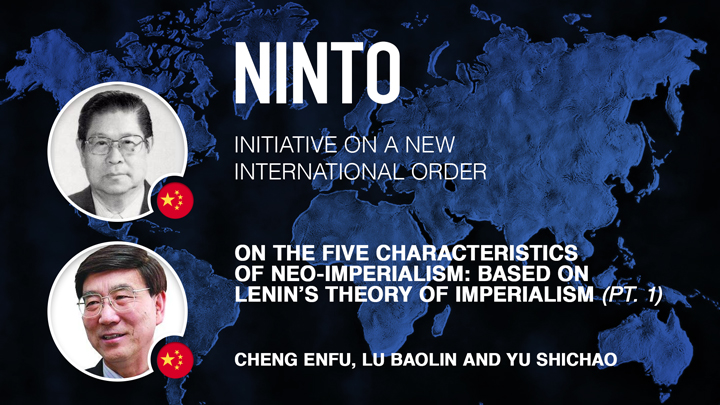
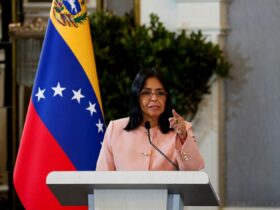

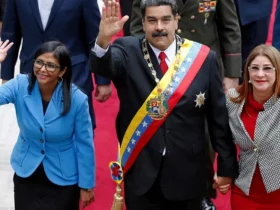

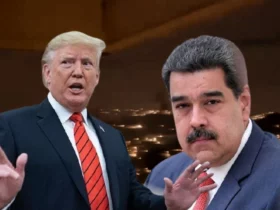
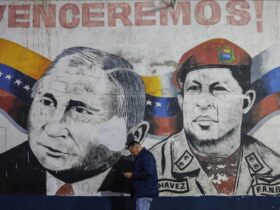
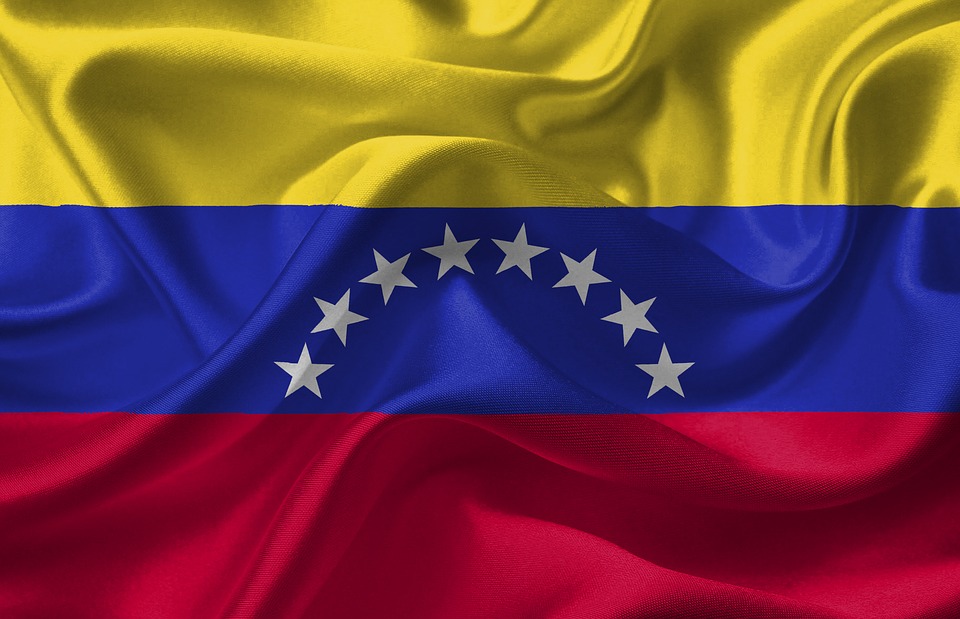


Leave a Reply